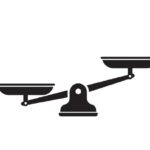Introduction
The US healthcare system is a topic that consistently sparks debates, discussions, and frustrations. From the perspective of some, it’s a well-functioning machine delivering world-class care. For others, it’s a maze of complexities and costs that can leave individuals and families feeling lost and burdened. In this comprehensive exploration, we will dissect the US healthcare system, uncover its intricacies, and examine both its strengths and weaknesses. While it’s a system that often generates strong opinions, we’ll strive to provide a balanced view, considering its impact on individuals, the economy, and society as a whole.
The US Healthcare Landscape
The Multi-Tiered Structure
The US healthcare system operates on a multi-tiered structure, with various players and components, each serving a distinct role.
Table: Key Players in the US Healthcare System
| Player | Role |
|---|---|
| Healthcare Providers | Deliver medical services and treatment. |
| Insurers | Provide coverage and manage healthcare costs. |
| Government | Regulate the industry, fund programs, and set policies. |
| Pharmaceutical Companies | Develop and manufacture medications. |
| Patients | Seek medical care and make healthcare decisions. |
The Cost Conundrum
One of the most prominent features of the US healthcare system is its cost. Healthcare expenses in the United States are among the highest in the world, and the reasons for this are multifaceted.
List: Factors Contributing to High Healthcare Costs
- Administrative expenses related to insurance.
- Expensive medical technologies and treatments.
- Defensive medicine and malpractice concerns.
- Pharmaceutical pricing and drug costs.
Access and Affordability
The Insurance Puzzle
Health insurance plays a significant role in the US healthcare system, providing access to care for millions of Americans. However, the intricacies of insurance can also create barriers to access and affordability.
Table: Types of Health Insurance Plans in the US
| Insurance Type | Key Characteristics |
|---|---|
| Private Health Insurance | Offered by employers or purchased individually. |
| Medicare | Government program for individuals 65 and older. |
| Medicaid | State and federal program for low-income individuals. |
| Affordable Care Act (ACA) Plans | Marketplace coverage with subsidies. |
The Coverage Gap
Despite the presence of various insurance options, a significant coverage gap exists, leaving millions of Americans without access to affordable healthcare.
List: Common Reasons for Lack of Healthcare Coverage
- Ineligibility for public programs like Medicaid.
- Inability to afford private insurance premiums.
- Lack of employer-sponsored insurance.
- Immigration status limitations.
Quality of Care
Excellence and Disparities
The US healthcare system is known for its excellence in medical research, technology, and specialized care. However, it also faces challenges related to healthcare disparities.
Table: Healthcare Disparities in the US
| Disparity | Affected Populations | Contributing Factors |
|---|---|---|
| Racial and Ethnic Disparities | Minority communities | Socioeconomic, cultural, and access factors |
| Rural Healthcare Disparities | Rural populations | Limited access to medical facilities |
| Gender Disparities | Women’s healthcare | Gender bias, access to specialized care |
| Income Disparities | Low-income individuals and families | Limited resources and access |
Medical Innovation
The US healthcare system has been a hotbed of medical innovation, producing groundbreaking treatments, medications, and technologies.
List: Notable Medical Advancements from the US Healthcare System
- The development of vaccines and treatments for various diseases.
- Advances in organ transplantation techniques.
- Pioneering research in genomics and personalized medicine.
- Cutting-edge medical devices and robotic surgery.
Challenges and Solutions
Addressing High Costs
Addressing the issue of high healthcare costs requires a multi-pronged approach, including measures to increase transparency, reduce administrative overhead, and control drug pricing.
Table: Strategies to Control Healthcare Costs
| Strategy | Impact |
|---|---|
| Price Transparency | Informed decision-making and cost awareness. |
| Administrative Simplification | Reduced bureaucracy and paperwork. |
| Drug Price Regulation | Affordable access to medications. |
| Telemedicine Expansion | Improved access and reduced costs for remote care. |

Expanding Access
Efforts to expand access to healthcare include strengthening public programs like Medicaid, enhancing the Affordable Care Act (ACA), and addressing workforce shortages in underserved areas.
List: Approaches to Improve Healthcare Access
- Medicaid expansion to cover more low-income individuals.
- Support for community health centers and clinics.
- Investment in telehealth and remote care options.
- Incentives to attract healthcare professionals to underserved areas.
Conclusion
The US healthcare system is a complex tapestry of excellence, disparities, challenges, and opportunities. While it boasts world-class medical innovation and expertise, it grapples with issues of access, affordability, and disparities in care. Finding solutions to these challenges requires a concerted effort from policymakers, healthcare providers, insurers, and the public.
In navigating this complex system, it’s essential for individuals to be informed consumers of healthcare, understanding their insurance options, rights, and responsibilities.
Additionally, continued dialogue and efforts to reform the system are essential to ensure that all Americans have access to quality healthcare without facing financial hardship. While the US healthcare system remains a subject of debate, it is a vital component of the nation’s well-being, deserving of careful consideration, evaluation, and improvement.
















